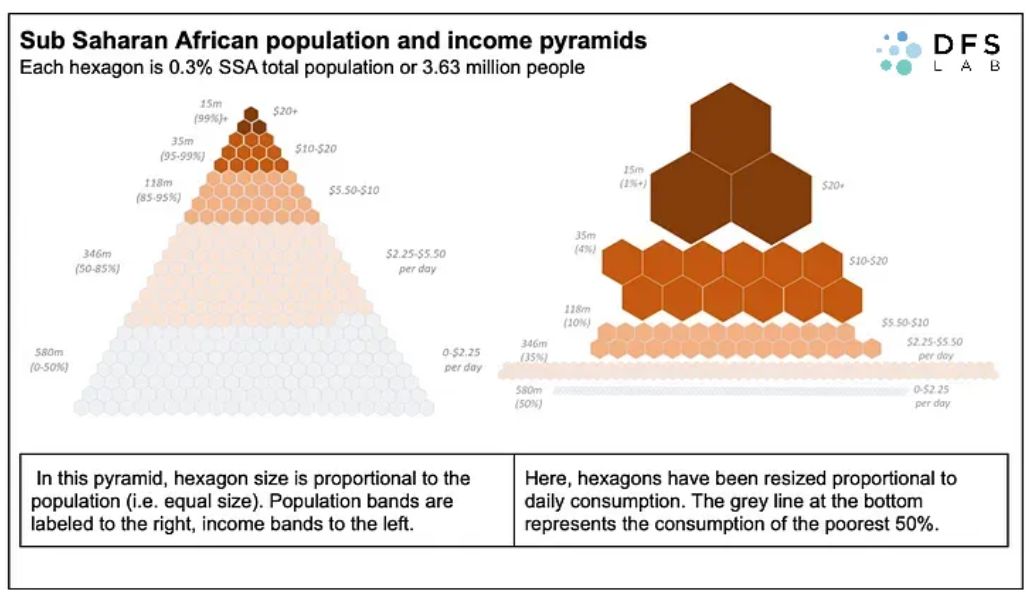Livelihoods Pathways Report
This article is co-authored by Chernay Johnson, Leila Haroon Mohammed and Caroline Mangowal.
In Indonesia, as in many other parts of the world, there is a deep sense that the digital economy is changing how a significant proportion of people pursue livelihoods — how they find work, sell goods and services, and earn a living. We estimate that as many as one in five Indonesian workers rely on a digital platform for at least some part of their livelihood.
While a lot of attention has focused on gig workers in Indonesia (e.g., ride-hailing and delivery platforms such as GoTo and Grab), the number of people selling and trading on e-commerce platforms (like Bukalapak and Shopee) and social media platforms (like the Meta platforms) could be many multiples bigger than the number of gig workers. We’ve found that up to 10 times as many people are engaged in trading and selling via digital platforms, with their activity being largely informal in nature.
Despite this, the characteristics of platform livelihoods have largely been a blind spot in the way that policy and tech actors understand online working and selling.
Against this backdrop, DFS Lab is actively delivering a two-year research program in Indonesia — in collaboration with RISE Indonesia and funded by the Bill & Melinda Gates Foundation. The program is a set of interconnected research activities designed to explore and document the current shape of the Indonesian platform economy, with a special focus on livelihoods (see below).

During the Pathways Study we conducted in 2022, we spent time in the field with more than 600 (purposefully sampled) platform participants in Java to better understand what drives them to participate in platform livelihoods, what drives them to stay or leave, and how platform participation affects their wellbeing, economic status, financial inclusion, and mobility.
The Pathways Study is focused on urban and peri-urban Indonesians and their engagement in the digital economy, while future studies of the two-year research program will look more closely at livelihoods and digital inclusion at the periphery of society, including the rural segments of Indonesia.
Our multi-method research methodology allows for a much deeper and nuanced understanding of the fractional nature of platform work and looks comprehensively at different categories, compared to the 100+ existing studies we have previously reviewed on platform livelihoods in Indonesia. It also allows for fully evaluating gig workers and online sellers’ experiences beyond just what they earn.
These are the key findings from our study on the pathways through platform livelihoods in urban Indonesia:
- Digital platforms are a first-time entry point into employment for many people.
Indonesia has become the fifth-most internet-engaged country in the world, and more than half of the adult population have access to the internet, according to the World Bank (2021).
In this context, digital platforms are creating new working opportunities: 18% of survey respondents said they had never worked before joining a digital platform (see Figure 1). There seems to be significant potential for digital platforms to enhance the livelihoods of Indonesians (even among those with limited job experience and lower levels of education, our research has found).
Figure 1: Indonesia — Platform participation is a first-time entry point into employment for many people

For a significant minority of platform workers, it is their first time making a living. These first-timers are 4.1 times more likely to be women, 1.7 times more likely to have a relatively low level of education (when compared with participants who have prior work experience), 3.1 times more likely to be youth, and their median earnings are above the minimum wage (see Figure 2).
Moreover, most respondents agree that their income has increased since they joined the platform. They also feel they have a higher social status and greater safety. That said, 50% of those who had left platform work reported finding a job with higher pay, indicating people go where the opportunity is.
Figure 2: Indonesia — New job entrants into the platform ecosystem are more likely to be women, those with lower education, and the youth

2. The lines between online and offline working and trading are increasingly blurring; sellers report earning multiples more than ride-hailers.
Fractionality is a key characteristic of platform livelihoods. Workers may have offline clients and augment their income with work or sales on digital platforms. Sellers, too, might mix channels, and we’re seeing an increasing number of individuals and business owners augmenting their income through engaging in social commerce.
Many traders (e.g., shop owners and local merchants who are involved in local services and food preparation) emphasized during in-depth interviews that digital and physical channels of doing business are becoming increasingly intertwined.
Moreover, data collected through this study further suggests that these traders as well as freelancers earn two to three times more on digital platforms than gig workers who engage in ride-hailing (see Figure 3).
Figure 3: Indonesia — Traders and freelancers report 2X — 3X greater earnings on platform, than ride-hailers

3. Platform participation encourages the uptake and usage of digital financial services among the minority of users who were not already included.
Survey data from the Pathways Study suggests that some platform participants are taking up financial services for the first time ever, after joining a digital platform, especially those with relatively lower levels of education. We’ve found that financial inclusion rates among survey respondents engaging in platform livelihoods tend to be higher than the national benchmark in Indonesia, in the case of both women and men (see Figure 4).
But, despite high levels of financial inclusion, individuals and small enterprises in some sectors still say they prefer cash as a means of payment, e.g., in ride-hailing and social commerce.
With respect to other digital financial services, first-time uptake of digital credit products is more prevalent than first-time uptake of bank accounts, while there are mixed results on the impact on insurance uptake.
Figure 4: Indonesia — Across both genders, the reported rate of financial inclusion of platform workers and sellers exceeds national statistics

4. Digital platforms are playing an increasingly important role in supporting the livelihoods of Indonesian women.
Women are steadily taking up e-commerce and particularly social media platforms to support their livelihoods, and this is often an overlooked area in the research and policy discourse.
Many women were hit hard by COVID and joined platforms due to losing a previous job or source of income. Two to three years later, many of them are still on those platforms.
“When I was still working, children were often entrusted to their parents, because their husbands also worked. […] I was pregnant with my 4th child, often felt nauseous, couldn’t afford to go out of town, so I decided to quit (working at a cosmetic company) […] After quitting work, I was unemployed for almost a year, before starting into an online business […] I’m satisfied.” — Interview quote from a make-up artist running a business online.
Across the different categories of livelihood, gig work showed almost no gender income gap, whereas income per hour while selling on platforms was nearly double for men. We believe a major contributor to the gender pay gap across platform sellers, is the fact that many women sellers are balancing other tasks at home (e.g., unpaid care work) that men are not expected to handle.
That said, more than 80% of women said their work–life balance and social status had improved since they joined the platform.
5. Digital platforms often advertise an easy process and low barriers to entry, but survey respondents experience many hurdles on joining.
Platforms often advertise an easy onboarding process for people joining, but the survey data shows that even urban platform participants reported many barriers, including trust concerns, onboarding friction, low literacy, and the lack of capital (see Figure 5).
Figure 5: Indonesia — Digital platforms often advertise an easy process and low barriers to entry, but survey respondents experience many hurdles upon joining

The survey data shows that the most challenging experience reported by respondents was learning marketing and selling. Working capital was only a concern for a few. When first joining platforms as sellers, women report facing mostly issues related to growing their businesses.
This Indonesia research program to date has identified a few key barriers to platform onboarding and participation where policy intervention would improve the experiences, mobility, and financial inclusion of online workers and sellers. These include, among others:
- investing in core infrastructure,
- creating an enabling business environment,
- supporting partnerships between digital platforms and financial institutions, and
- digital upskilling (in particular, a focus on designing gender-smart programs).
There is a considerable opportunity for Indonesia to be a world leader in, and a beacon of, inclusive digital economies. But the policy, research, practice, and technology communities each has a role to play and must all work together to bring this about.
New models that are binding digital platforms and livelihoods together are an exciting area for future research. Yet, there are still some “key unknowns” and a need for better data to:
- gather nationally representative data on platform livelihoods (including at a gender-disaggregated level),
- take a closer look at the productivity dynamics inherent in platform livelihoods,
- better understand the drivers and pathways to mobility especially for periphery segments such as the rural population, and
- explore the relationship between platform ecosystems and digital financial services’ usage more closely.
As a team, we’ll continue to share insights to fill these and other knowledge gaps. In future research, we’ll release research results on the engagement of rural Indonesians across the agriculture, fisheries, e-commerce, and social commerce sectors of the platform ecosystem.
For more information about the research program or to collaborate with us, please get in touch with DFS Lab’s Director of Research, Chernay Johnson (chernay@dfslab.net). You can subscribe for forthcoming research and related event information here.
We are thankful to our research partners RISE Indonesia and Jonathan Donner (Senior Director, Research at Caribou Digital), as well as the Bill & Melinda Gates Foundation (which funds this program), for making this research possible.
.svg)







.png)